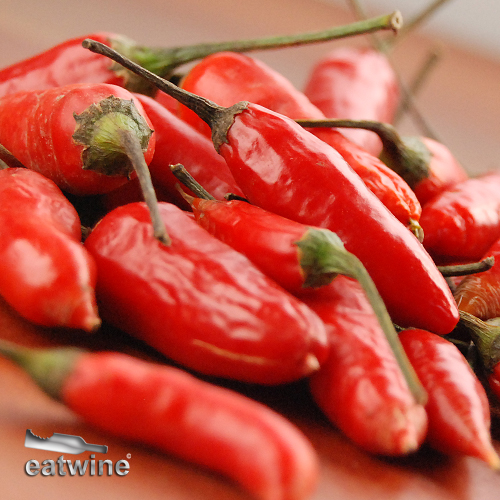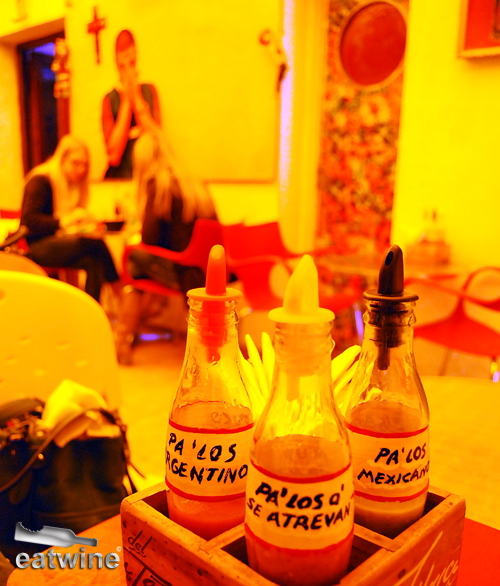

There’s a term that I really love here for describing spicy food. Let me qualify spicy first. The kind of delicious spicy that makes your taste buds stand at attention but does not scorch your palate nor have you downing liters of water (or milk) for relief. It’s that spiciness that makes you go “oh yeah” yet walks that fine line of too much heat, exploding with flavor. As you eat, you may feel your body temperature raising, a bead of sweat forms on your brow, but oooh!, the taste. So. Damn. Good. That, amigos, is what they call picante sabroso. Loosely translated, it means “tasty spicy” but it effectively causes the above-said bodily sensations and palate ecstasy. It was a term I had not discovered until living here but I think adequately paints the picture for fellow chili lovers.
Chilies are indispensable in South American cuisine as they bring flavor and heat to many dishes. That being said, South American spicy does NOT equal Mexican spicy. It’s a whole other world from chilies to the actual recipes where they are employed. While the Southern Cone with its heavy European ancestry may be considered slightly “wussy” in comparison to northern neighbor like Peru or the African states of Bahía in Brazil, even in Chile & Argentina, many of the chilies are cornerstones to authentic dishes. Fittingly, depending on the region and climate, chilies come in a variety of shapes, sizes, and spiciness to jazz up those regional recipes.
When buying fresh chilies, look for chilies that appear taut and glossy with deep colors. They should feel firm and crisp in your hand. Also check to make sure the stem is not broken. Wrinkled skin, brown spots, or a flaccid texture indicate a chili that is not fresh and will promptly grow “fur” in your refrigerator. Store chilies in the refrigerator, either loose or wrapped in paper towels. Storing them in plastic can cause excess moisture and faster spoilage.
Many chilies, like yellow chilies, are commonly blended first into a sauce that is incorporated to liven up a dish. To make a basic chili paste, cut off the ends of the chilies and seed. Cook them in simmering water for 30 minutes until very soft. Remove the paper-thin skins, then place the chilies in a blender with a few tablespoons of their cooking liquid and a pinch of salt. Blend until smooth.
If you’re living down in these latitudes, all you’ll need is a visit to the market to select a chili sauce from the vats available. A general rule of thumb is that the more visible seeds, the spicier it tastes. If you’re in the US and not near a well-stocked or ethnic supermarket, try a Latin grocer for specific varieties of chilies. In many cases, the chilies will come frozen. Alternately, you can purchase ready-made chili paste to use as a substitution for fresh chilies in the case of some of the Peruvian varieties. Here’s a run-down of some the most common chilies and their preparations.

Ají Chileno-Cristal
Despite Chile’s name, you’ll oddly find that Chileans do not in fact love spicy food. They are more about the condiments that go on the side to meats, potatoes, and the beloved bread or empanadas. One of the most common chilies throughout the country is the ají chileno-cristal is a Chilean heirloom sold in large mounds in marketplaces. A pale yellow with a slightly translucent skin, this chili has a medium spiciness that is perfect for many dishes, and is particularly used in the quintessential pebre. I love to use it as you would a jalapeño although it has bite. I find that jalapeños can be somewhat tasteless.
Rocoto
Hailing from Peru where it’s been cultivated for thousands of years, rocotos are some of the spiciest chilies with strength on par with the habañero. Be careful or you will scald your taste buds. They are similar in appearance to a petite bell pepper with thick walls, but the flesh is fiery with small black seeds. Although most rocotos come in the red variety, though there are variations of orange and yellow. When working with rocotos, I seriously recommend the use of gloves. These chilies are commonly roasted and stuffed with pork or beef, slivered as a garnish ceviche, or puréed into a crema for sauces or dipping. If eating them stuffed, have abundant beer on the table to put out the fire. Not for the faint of heart.
Ají Amarillo (Yellow Chilies)
The Atlantic wrote that yellow chilies are the soul of Peruvian cuisine, and I think that’s an accurate observation. What does that allude to? Literally, virtually almost recipe (or many at least) use yellow chilies, and their floral piquant paste, as the base of flavor. These chilies are a staple of Peruvian cuisine and are incorporated to many classic recipes in the form of a paste. Cook through a book of Peruvian recipes and I guarantee you’ll blow through the better part of a jar. Although these chilies are commonly called “yellow”, don’t let their mundane name fool you. In appearance when fresh, they are closer to bright orange and are subdued when cooked. Jarred yellow paste is convenient to have on hand if fresh yellow chilies are not available. Yellow chilies have a medium bite, on the scale of cayenne or Tabasco, a decidedly floral component on the nose, and add a piquant note to dishes. It’s the kind of heat you can truly dose and Peruvians love to prepare this with a sofrito base for so many dishes fro arroz con pollo to creamy yellow chili chicken, ají de gallina, or the succulent rice-bean tamale, tacu tacu.
Ají Panca
Similar in appearance the yellow chili, this is a deep red chili that normally comes dried or in a paste form. Once harvested, they are sun-dried and used whole or ground into the paste. It is a very subtle, earthy flavor and hardly spicy. In fact, on one visit, my mother confused it with tomato paste. They will soak it and purée it into a sauce for marinating meats as an adobo arequipeño for pork, or add spoonfuls to stews and soups like the delicious Peruvian Shrimp Chowder, chupe de camarones. Recipe for the above-said pork in our cookbook.
Ají Cacho Cabra & Merkén
Meaning “goat’s horns”, this red chili is quite spicy and used as the base for the local crushed red pepper or more commonly as a spicy condiment, merkén, Chile’s contribution to the global spice rack. Merkén is still an artisanal production in the south of Chile by the Mapuche indigenous community. Made from dried smoked cacho de cabra chilies, it is ground with crushed cilantro seeds. In some cases, cumin and sea salt may be added. Merkén gives a smoky, slightly spicy note to food without being overpowering. Think chipotle minus the bite. Sprinkle it on fish, chicken, beef, soups, and vegetables. I seriously put it on everything. Store it in a jar in a dry place for up to two years—if it will last you that long!
Malagueta
This small tapered red pepper, about 2 inches long, looks harmless but carries a serious punch to the tune of 60,000-100,000 Scoville units, similar to Tabasco. In fact, they belong to the same family as Tabasco, with noticeable heat. Brazilians use these chilies primarily as part of Bahian cooking in the northeast, with its heavy African influence which utilizes heavier fats such as coconut milk and dende (palm) oil to place down its fiery nature in dishes like Bahian Coconut Fish Stew, or moqueca. Be sure to use sparingly. A little goes a long way!
Tips for Working with Chilies
I am going to say this out of experience, having stuck one-too-many chili-laden fingers into my poor, unsuspecting eye. Use caution when handling fresh chilies. They contain a pungent compound, capsaicin, which will cause a severe burning sensation if it comes in contact with your skin, lips, or, worse, eyes. Use rubber gloves to protect yourself and thoroughly clean your cutting board, knife, and hands with soap after working with chilies. Avoid touching your eyes and any other “sensitive” body parts. Trust me.












